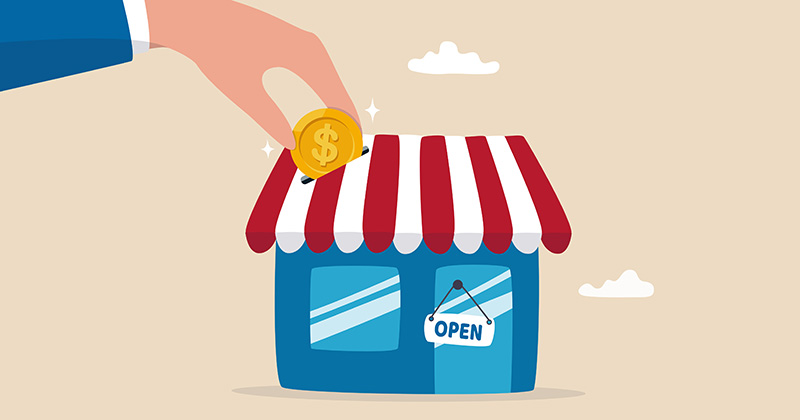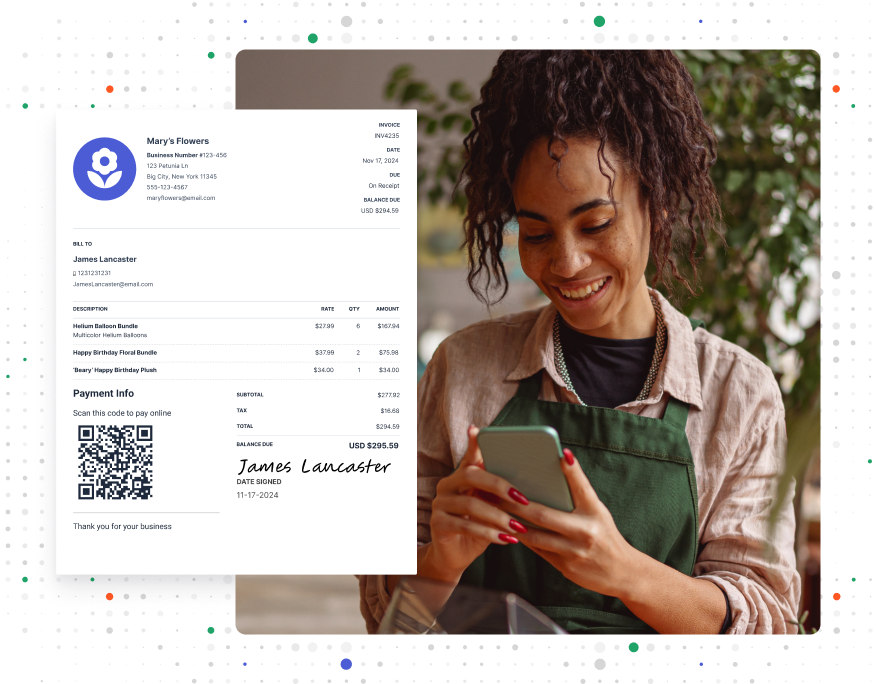How Do Small Business Loans Work? Key Insights for Owners

A small business loan can provide your company with the financing it needs to grow. For most, paying out of pocket is not realistic. That’s why securing outside funding is often essential to start, sustain, or expand a company.
A small business loan can be the ideal way to get the necessary money. The growth from the extra capital can make paying off the loan easier. Also, loans allow you to keep control of your business. In other words, you do not have to appease investors who may have conditions for their investment.
But how do small business loans work? In this article, we’ll cover the basics of small business loans.
You’ll learn what they are and the different varieties you can apply to receive. We’ll explain the benefits of these loans and the steps in the application process. We’ll also explore eligibility requirements and common terms.
Finally, the article will end with steps you can take today to prepare for the application process.
RELATED ARTICLE: How to Create A Small Business Budget in 4 Easy Steps
What Are Small Business Loans?

Small business loans provide capital for small businesses. These loans are prevalent. According to the Small Business Administration (SBA), a small business has fewer than 500 employees. And 99% of the businesses in the US fit into this category. Of these businesses, 81% are run by individuals who do not have any employees.
Many banks, credit unions, government programs, or alternative lenders have loans designed to meet the needs of these businesses.
These loans can serve a variety of purposes. You may use a loan for the following reasons:
- Buying equipment
- Managing cash flow
- Hiring employees
- Expanding operations
Most small business loans have well-defined terms. Like personal loans or mortgages, lenders assess your creditworthiness before approving the loan. They might examine your credit history, business plan, and financial statements.
Many small business loans have restrictions on how the funds can be used. However, others are designed to provide general working capital.
RELATED ARTICLE: LLC Tax Classifications: A Guide for Small Businesses
Different Types of Small Business Loans
There are different types of business loans available to small businesses. Here are seven of the most common options you will encounter:
- Term loans are traditional loans. You borrow a fixed amount and repay it with interest over a set period. Term loans are ideal for investments like purchasing equipment or expanding your property. Depending on the lender, repayment periods can range from one to 10 years.
- Small Business Administration (SBA) loans are partly government-guaranteed. They have lower interest rates and longer repayment terms than commercial loans. However, SBA loan requirements are strict and require a lot of paperwork. At the same time, they are great for businesses seeking stable, affordable financing.
- Business lines of credit are flexible loans that let businesses access funds as needed, up to a limit. They are good for managing fluctuating cash flow or covering unexpected expenses. You only pay interest on the amount you use, making them an efficient solution for short-term needs.
- Equipment financing is a loan specifically for purchasing machinery or tools. The equipment is collateral for the loan, allowing for a low interest rate. However, the terms can depend on the equipment’s lifespan and overall cost.
- Invoice financing involves borrowing against unpaid invoices. It helps businesses maintain cash flow while waiting for customers to pay their bills. This option is useful if you have contracts that only pay quarterly and annually.
- Microloans are small loans from nonprofit organizations, usually up to $50,000. This is an excellent option for startups or businesses in underserved communities. Microloans often include mentoring and support services.
- Merchant cash advances give businesses a lump sum that is repaid with a percentage of daily sales. While this option provides quick access to cash, it often comes with higher costs. It is most suitable for businesses with high credit or debit card transaction volumes.
Knowing these options can help you choose the right loan for your needs.
FROM ONE OF OUR PARTNERS: Non-Bank Options for Small Business Loans
Why Small Business Loans Matter

Small business loans offer specific benefits to business owners. There are different reasons why you might need a small business loan. Here are some of the most common ones:
- Startup capital: New businesses need loans to get started. They use the funds to buy inventory, equipment, and property and hire employees.
- Managing cash flow: Seasonal businesses can use loans to cover slow times.
- Expansion: Loans let businesses invest in growth. They can open new locations, develop new products, or enter new markets.
- Building a credit history: Repaying a loan boosts a business’s credit score. The credit history makes it easier to get financing in the future.
- Opportunities: Loans can help you act on time-sensitive opportunities. For example, you can get a loan to buy discounted bulk inventory or respond to higher demand.
Business loans can be useful whether you’re trying to start a business or survive a downturn. Even if you don’t currently need financing, it can be helpful to research your options for future financial needs.
The Step-by-Step Process of Applying for a Small Business Loan
The small business loan application process is similar to a personal loan, mortgage, or credit card application. However, there are usually a few additional steps. Here is what to do once you decide that you need to apply for funding:
- Identify your needs. Determine why you need the loan and how much funding you require. Define how you will use the funds. This information can help you choose the best loan type.
- Research lenders. Explore your small business financing options. These may include local banks, credit unions, and online lenders. Compare interest rates, repayment terms, and eligibility. Then, find the best fit for your needs.
- Collect documentation. Compile documents like a business plan, financial statements, tax returns, and licenses. They will show your ability to repay the loan.
- Check eligibility requirements. Review the lender’s rules and make sure you meet their criteria. Variables can include minimum credit scores, annual revenue, business valuation, and years of operation.
- Submit your applications. Complete the loan applications and submit all required supporting documents. Some lenders may require an interview or ask for more details about your business.
- Review loan offers. Check the terms of each approved loan application. Important information includes the interest rate, fees, and repayment schedule. Choose the offer that best aligns with your financial goals.
Once you accept a loan offer, the lender will disburse the funds. You can then use the money as planned and start repayment according to the terms.
FROM ONE OF OUR PARTNERS: How to Prepare and Get Approved for a Small Business Loan
Key Eligibility Requirements for Small Business Loans

Lenders will have specific requirements for your small business loans. Loan eligibility for small businesses can vary from lender to lender. You’ll need to meet the criteria to get approved.
These are the most common small business loan requirements:
- Credit score: A strong personal or business credit score is important. Most lenders look for a score of 600 or higher.
- Business plan: Some lenders will ask for a plan outlining your goals, strategies, and financial projections.
- Time in business: Many lenders need at least one to two years of operating history to process your loan request.
- Revenue requirements: Show proof of the revenue you will use to repay the loan.
- Collateral: Some lenders ask for assets, such as equipment or property, to secure the loan. Collateral can also help you qualify for lower interest rates.
- Debt-to-income ratio: A lower ratio shows lenders you can handle additional debt without straining your budget.
- Legal documentation: Proper licenses, permits, and incorporation paperwork are often necessary.
Completing this paperwork upfront can help speed up the loan application process.
Understanding Loan Terms and Repayment for Small Businesses
Read the loan terms carefully. Understanding them is crucial to choosing the best option for your needs. Here are the variables you should consider when choosing a loan:
- The loan amount is the total amount you can borrow.
- The interest rate is the percentage the lender charges for borrowing the funds.
- The repayment schedule tells you how often payments are due (weekly, monthly, quarterly) and for how long.
- Fees can include origination fees, late payment penalties, or prepayment charges.
- Collateral is the assets you provide to secure the loan. You keep ownership of this property unless you default on the loan. Then, the lender takes them.
- Annual percentage rate (APR) is the total loan cost for one year, including interest and fees.
Make sure you understand the overall cost of the loan, including interest. Also, consider your ability to repay and the level of risk for defaulting.
FROM ONE OF OUR PARTNERS: How to Protect the Financial Data of Your Small Business and Your Customers
Key Takeaways for Small Business Loans
Loan applications take time. While it’s good to start collecting documentation and researching lenders, there are other steps you can take right now. These will help lay the foundation for loan applications in the future.
- Check your credit score. Use free online tools to assess your credit.
- Define your funding needs. Write down how much money you need and how you plan to use it.
- Look at your current budget. Decide the amount of loan payment you can afford without straining your finances.
- Define what happens if you don’t get a loan. Decide if a loan is necessary for your business’s survival and expansion.
Start Your First
Invoice Today
Create customized and professional
invoices and connect with clients








